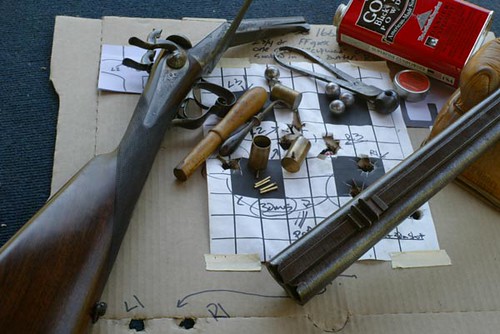| tinker |
| (.416 member) |
| 10/07/08 06:37 PM |

|
|
|
Dale-
The work you're talking about isn't work for a welding machine. It's a job for a torch or a 'hearth furnace'
The proper joining method is hard silver soldering. The actual alloy and flux needed for the job depends on the materials being joined, the clearances, and the stress that will be applied to the joints.
The real work is in the absolutely perfect fitting of the pieces to be joined.
It's important to understand the strengths and limitations of the brazing alloys you'll be using, the clearances needed for them to work properly, the heat range you'll need to work at -- which is directly relative to the properties of the alloys and properties of the parent materials. You'll need to choose exactly the right flux for the job, and you'll need experience working with the combination of parent materials, sections of material, nature of the joint you'll be attempting to make, flow characteristics of the silver solder or brazing alloy you'd have chosen, and appearance and behaviour of the flux you've chosen inside the working temperature of the combination of materials and expendables you're joining in the weldment, as is often the case, your flux may be your only temperature indicator during the process.
To put it simply, you really need to know your stuff, soup to nuts, all through the process.
A lumps-to-barrel-to-barrel-to-quarter rib joint is no place for a tig weld.
--Tinker